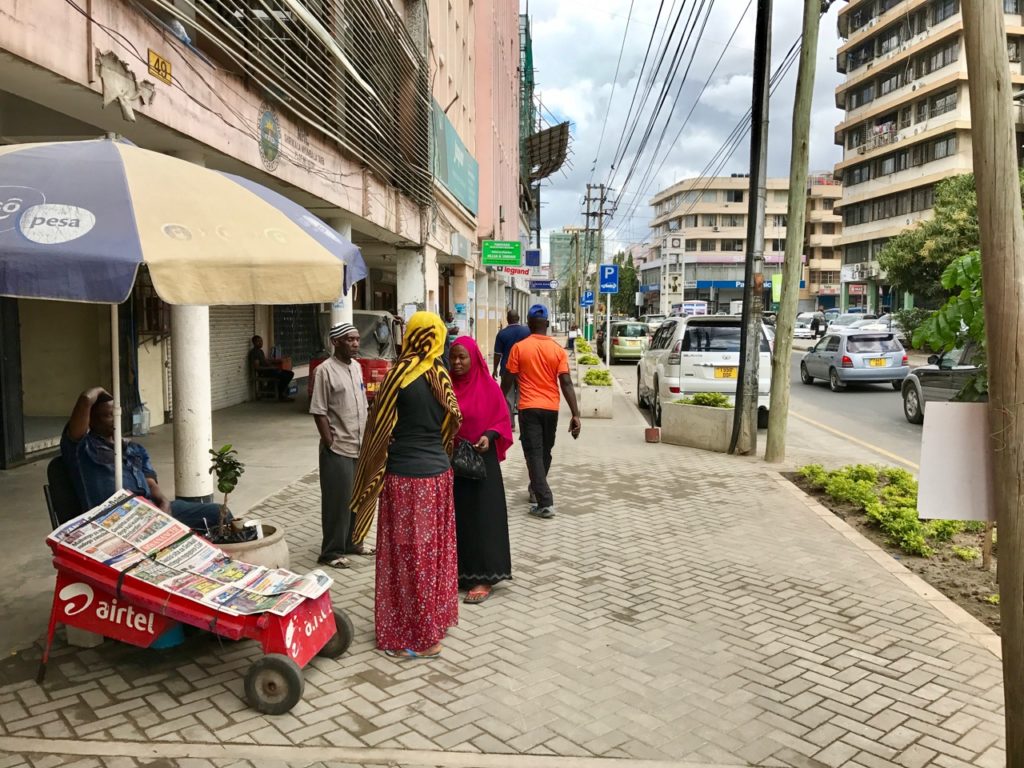Following are some of the implementation activities that an NMT strategy can incorporate:
- Continuous pedestrian realm. Cities and towns need high-quality footpaths. Footpaths should be designed according to the zone system, with at least 2 m of clear space for walking. Crossings and junctions are also essential components of a well-connected street network.
- Cycle facilities. Dedicated cycle tracks should be developed on major streets with two or more lanes of traffic in each direction. Cycle tracks require physical separation from the carriageway and sufficient clear width for cycle movement (i.e., at least 2 m).
- Greenways. To supplement walking and cycling improvements on city streets, walkways and cycle paths can be developed along corridors that are separate from the street network, such as water bodies or parks.
- Network plans. Cities can develop city-wide network for walking and cycling to guide the prioritisation and phasing of specific NMT projects.
- Lighting. Adequate street lighting improves safety by enhancing visibility—both the NMT users’ ability to survey the surroundings and drivers’ ability to see pedestrians and cyclists. Street lighting also contributes to the perceived and actual threat of criminal activity.
- Intersection redesigns. Improved intersection design can significantly reduce road crashes, injuries and fatalities while at the same time improving motorised traffic flow. Dedicated and protected space should be provided for pedestrians to safely cross the street at intersections.
- Bicycle sharing. Bicycle sharing can serve short trips in cities and improve last-mile connectivity to public transport through a healthy, safe, and environmentally friendly means of transport. Bicycle sharing can serve short trips and offer a convenient “last mile” option for public transport passengers to reach their final destinations.
- Review of design standards. In many cities and countries, outdated street design standards hamper the implementation of NMT facilities. Such standards, are often derived from American and English highway design standards and are oriented primarily toward rural road design. Manuals should be revised to incorporate details on the geometry of footpaths, cycle tracks, crossings, bus stops, street vending spaces, on-street parking, bus rapid transit, and intersections.
- Parking management. Market-based parking fees can help manage demand for parking, and robust parking enforcement mechanisms can help ensure that walking and cycling facilities, once built, remain well maintained and free of encroachments.
- Vendor management. Street vending makes streets vibrant and safer for pedestrians, providing essential goods and services to pedestrians as they walk to their destinations. Dedicated vending spaces on city streets should be clearly marked, and vending activities should be managed by local authorities to ensure that vending activities do not encroach on areas intended for pedestrian movement.
- Communication. Communications and engagement activities will play a key role in building public support for the NMT strategy. Effective messaging about NMT and public activities can build enthusiasm for NMT use and can begin to foster a changed culture that accepts walking and cycling as integral modes of transport.
- Review of zoning and building control regulations. The built environment surrounding pedestrian routes must be conducive to walking. Walking is safer and more enjoyable when sidewalks are populated, animated, and lined with useful ground-floor activities such as store fronts and restaurants. In turn, being closer to passing pedestrians and cyclists increases the exposure and vitality of local retail, bringing significant economic benefits. Existing building control and zoning regulations may make it difficult to create buildings that contribute to an active pedestrian realm. These regulations should be reviewed as part of the process of implementing an NMT strategy.
